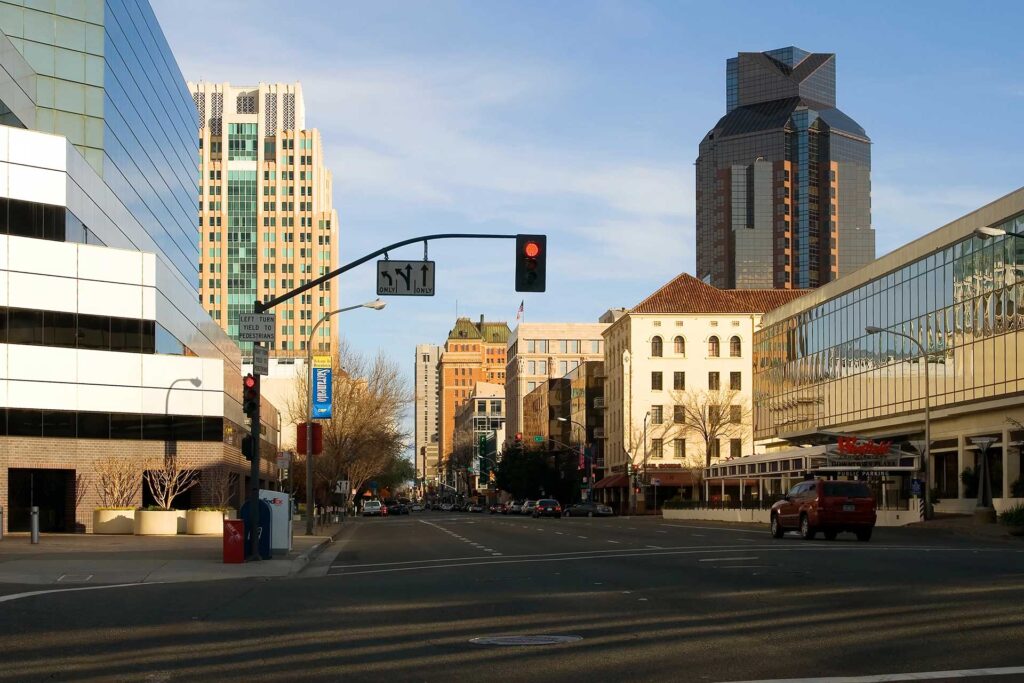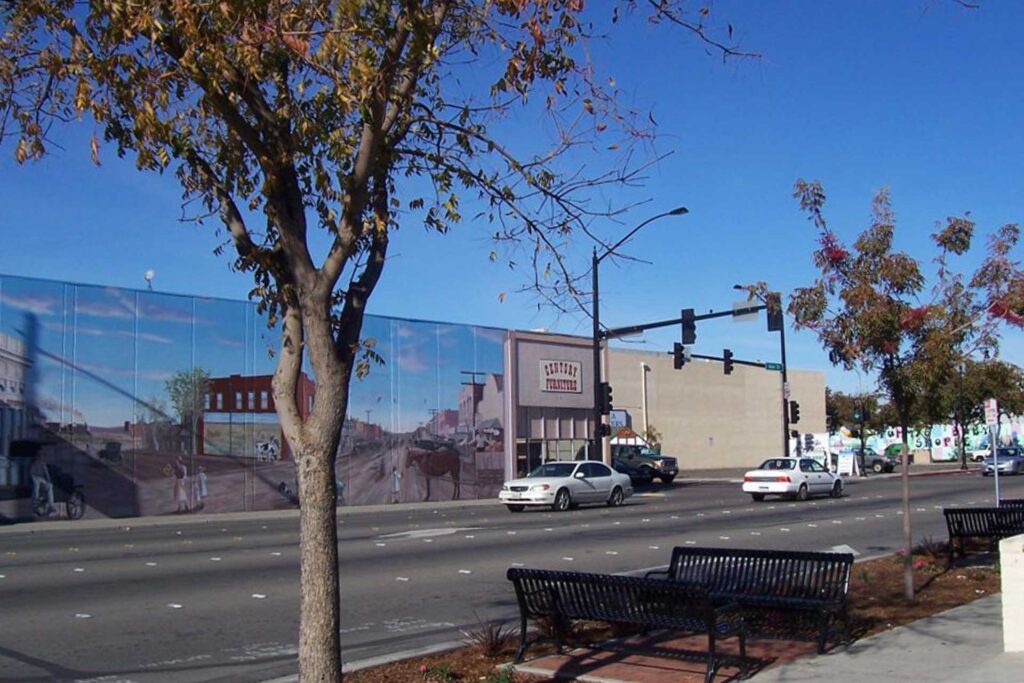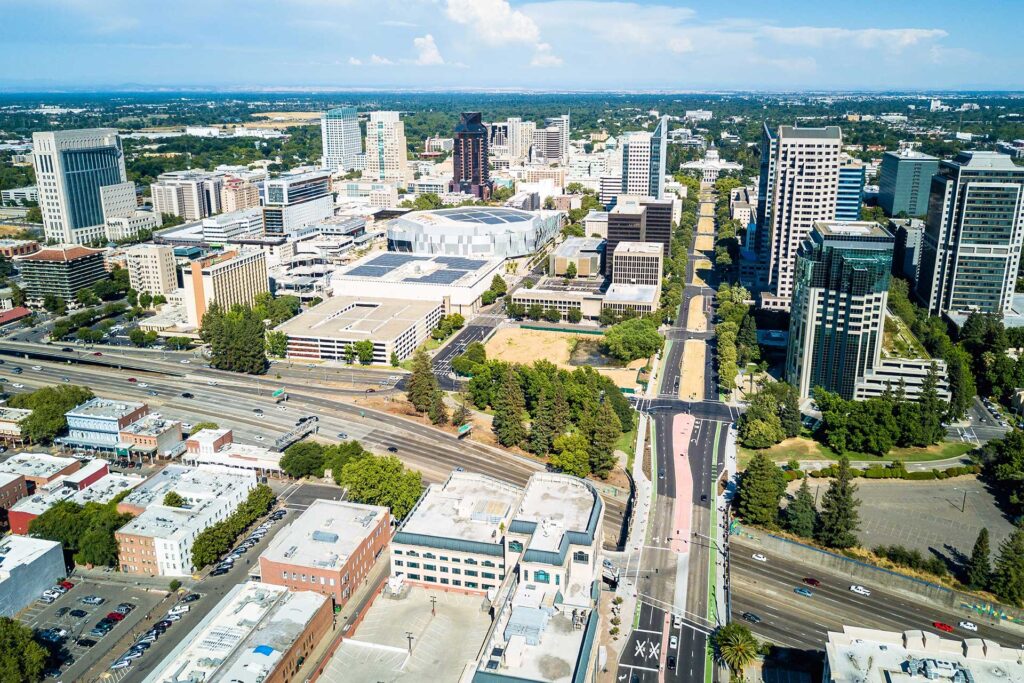Sacramento, California, is emerging as a key player in the industrial real estate market, gaining recognition for its strategic advantages. Historically overshadowed by larger markets like Los Angeles and the Bay Area, Sacramento has carved out a niche as a hub for logistics, manufacturing, and distribution. The city’s favorable location, infrastructure, and business environment make it a prime destination for companies expanding their industrial operations.
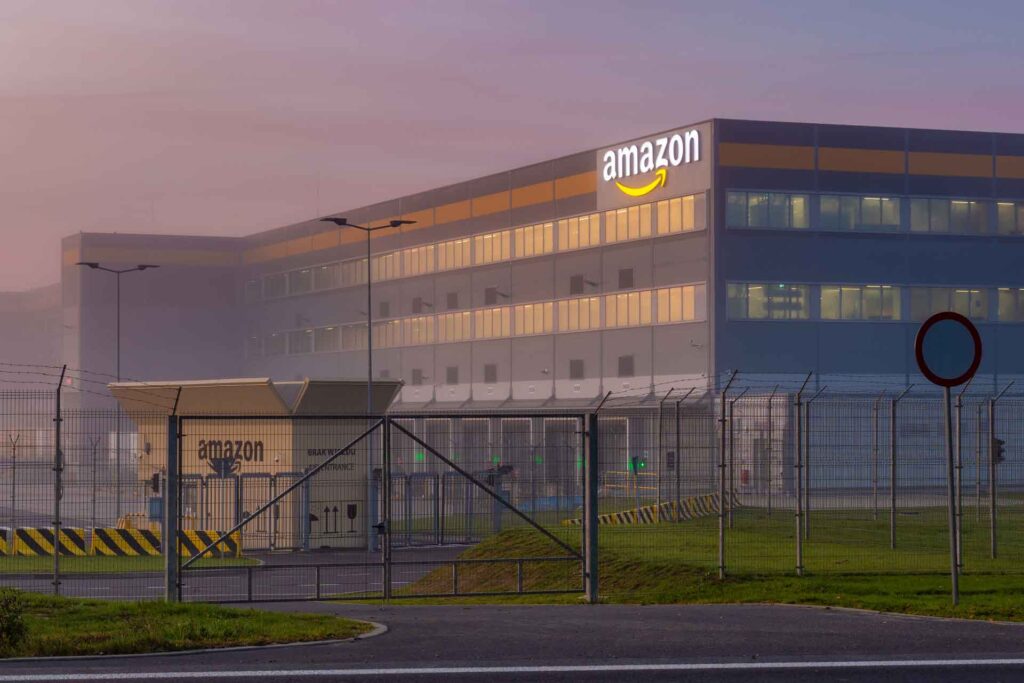 Strategic Advantages of Sacramento
Strategic Advantages of Sacramento
- Geographical Position and Connectivity
One of Sacramento’s most significant advantages is its geographical location. Its proximity to major markets like the Bay Area and its position at the junction of key east-west and north-south freeways make it a prime distribution center. The region offers easy access to both domestic and international markets, with key logistics hubs such as the Port of Oakland playing a vital role in global shipping. Sacramento’s connections to major transportation corridors allow for seamless movement of goods, a critical component for businesses involved in last-mile deliveries, especially in the booming e-commerce sector. - Growing Industrial Real Estate Market
Sacramento’s industrial real estate market has been expanding rapidly, with over 150 million square feet of industrial space. Despite a recent increase in vacancy rates, reaching 5.8% — the highest since 2017 — demand remains strong, particularly for small-bay industrial buildings between 5,000 and 25,000 square feet. The city’s competitive rental rates, significantly lower than those in regions like the East Bay or Silicon Valley, make Sacramento an attractive business alternative. Major companies like Amazon have invested heavily in Sacramento, establishing large distribution centers to support their expanding operations.New construction has also surged, though newer buildings have higher vacancy rates due to the influx of supply. Buildings completed in 2022 have a vacancy rate of 13.8%, while those completed in 2023 and 2024 have seen vacancy rates climb as high as 53.7% and 84.6%, respectively. However, the demand for more space remains, reflecting the resilience and potential of Sacramento’s industrial sector. With Sacramento’s industrial real estate sector on the rise, businesses need reliable guidance to secure the best opportunities in this competitive market. Our Commercial Real Estate Brokers are dedicated to helping clients make informed decisions, offering expertise to navigate every step of the process. - Infrastructure and Manufacturing
Sacramento’s infrastructure is tailored to support industrial growth and advanced manufacturing. The Port of West Sacramento operates as a Foreign Trade Zone, providing significant cost savings for businesses involved in manufacturing and exports. The region’s emphasis on workforce development programs ensures a steady supply of skilled labor, making it an attractive location for manufacturing companies. Additionally, the city’s industrial parks, such as McClellan Park, have been instrumental in attracting businesses across diverse sectors, including logistics, food processing, and electronics manufacturing. - Economic Incentives and Development Projects
Sacramento is actively investing in its industrial and logistical growth. High-profile projects like the California Mobility Center and Aggie Square are fostering innovation while providing essential services to logistics and manufacturing companies. These developments, along with economic incentives for businesses looking to expand, have positioned Sacramento as a hub of industrial and logistical activity. The presence of these forward-thinking initiatives has helped Sacramento gain significant momentum, offering businesses both infrastructure support and financial benefits. - Air Cargo Competition
Sacramento’s status as a logistical hub is further enhanced by the competition between Sacramento International Airport (SMF) and Mather Airport (MHR) for air cargo business. UPS and FedEx operate out of SMF, while DHL and UPS serve MHR. Additionally, Amazon’s nearby fulfillment center further cements the region’s importance as a key player in the air cargo sector. This competition ensures that businesses in the Sacramento area have access to efficient air freight services, enhancing the region’s appeal for companies requiring fast and reliable transportation of goods.
Success Stories: Companies Thriving in Sacramento
Several companies have recognized the strategic benefits of Sacramento and have established successful operations in the region. These success stories highlight the potential of Sacramento as a thriving industrial hub:
- Amazon Fulfillment Center: Amazon’s fulfillment center in Metro Air Park has not only created jobs but also contributed to the area’s economic development by attracting additional businesses. In 2017, Amazon completed this major distribution center, with further developments planned.
- Walmart Distribution Center: Walmart’s Sacramento distribution center plays a vital role in the company’s supply chain across the western United States. The facility has bolstered the local economy through job creation and has positioned Sacramento as a key logistics hub.
- Siemens Mobility: Siemens operates a significant rail manufacturing plant in South Sacramento, producing light rail vehicles and locomotives for markets across the U.S. The company has been a major employer in the region, contributing to Sacramento’s reputation as a leader in advanced manufacturing.
- XPO Logistics: XPO Logistics has established a strong presence in Sacramento with a large distribution facility, enhancing its supply chain capabilities. XPO’s success underscores Sacramento’s growing importance as a logistics and distribution hub.
- Mikuni Color Ltd.: Japanese manufacturer Mikuni Color selected West Sacramento for its U.S. manufacturing operations, benefiting from the region’s access to raw materials and its strategic location. Mikuni’s success in Sacramento demonstrates the region’s appeal to international businesses.
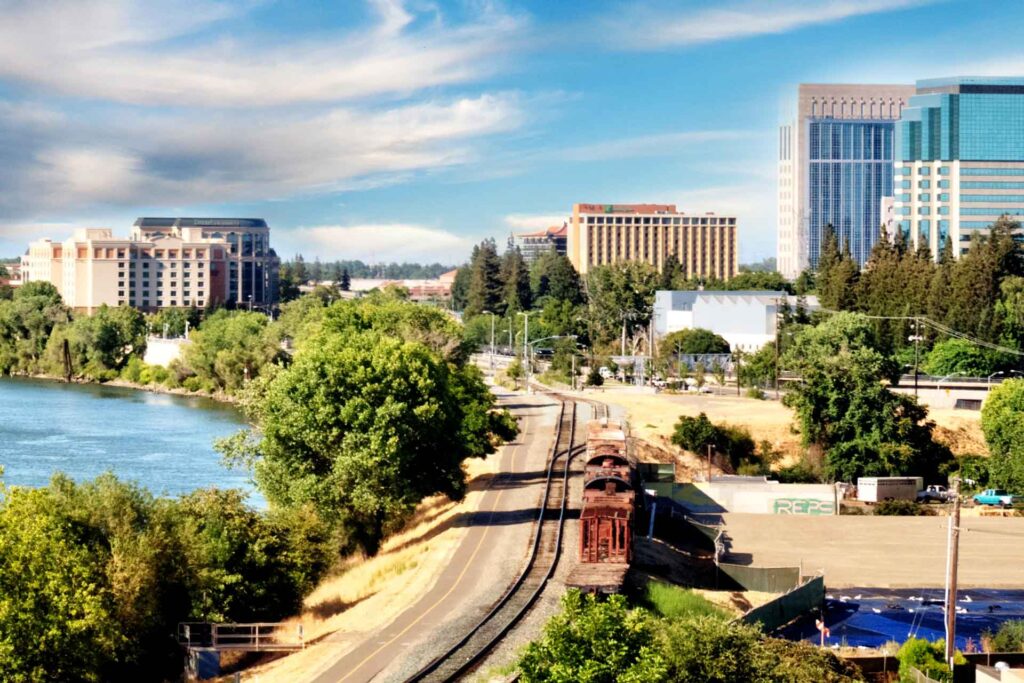 Market Dynamics, Development, and Future Outlook
Market Dynamics, Development, and Future Outlook
The Sacramento industrial real estate market has experienced robust growth and sustained demand, driven by the e-commerce boom and the resulting need for more distribution centers. Consistently low vacancy rates and rising rental prices reflect the strength of this market, encouraging developers to introduce significant new industrial spaces. This trend is especially prominent in areas like Metro Air Park and West Sacramento, where large-scale projects are either underway or recently completed, further cementing Sacramento’s position as a major industrial hub.
The Sacramento industrial real estate market is rapidly evolving, offering significant opportunities for businesses looking to expand in this thriving area. As the Top Commercial Real Estate Firm in Sacramento, we provide expert insights and comprehensive services to help clients navigate this dynamic market.
Several notable new developments are poised to enhance the region’s status as a prime location for industrial operations:
- Metro Air Park Expansion: This massive industrial park near Sacramento International Airport is undergoing significant expansion, with plans including a pre-application for a travel center and ongoing projects by NorthPoint Development including the May 2024 acquisition of an additional 85 acres, intended for large distribution and warehouse buildings to cater to local logistics firms. The park has already seen major developments, such as the Amazon fulfillment center completed in 2017, and additional projects like a distribution center for Walmart and a distribution center for SC Johnson completed in 2020. Overall, Metro Air Park is poised to continue its growth as a major logistics and industrial hub, with its strategic location near key transportation routes and Sacramento International Airport making it an attractive site for large-scale developments
- McClellan Park Industrial Redevelopment: McClellan Park, a former Air Force base, is being redeveloped into a thriving industrial complex. s one of Northern California’s largest business parks, it spans 3,000 acres and offers over 10 million square feet of industrial and office space, with entitlements for an additional 6 million square feet. The park is now nearly 90% occupied and hosts approximately 20,000 jobs, making it a key contributor to the local economy. Recent developments include the McClellan Logistics Center II, which adds 313,000 square feet of industrial space. This project consists of two large warehouse buildings with features such as rear dock loading, high ceilings, and extensive parking for trucks and employees. The site’s proximity to major highways and its integrated services, including access to a private airport and Union Pacific/BNSF rail service, make it highly attractive for logistics and manufacturing companies. The development supports Sacramento’s growing role as a logistics hub, particularly for companies like Tesla and Siemens that have established operations in the park.McClellan Park’s redevelopment has also focused on green initiatives, with significant investments in energy-efficient systems, solar power, and waste reduction. Environmental remediation efforts, such as groundwater cleanup, have made the site safer and more sustainable, addressing its status as a former Superfund site. New industrial spaces are attracting companies from various sectors, including Tesla, which operates in one of McClellan’s state-of-the-art logistics and distribution facilities designed to handle large-scale operations. Learn more
- Airport South Industrial Project: is a significant development initiative located southeast of the intersection of Powerline Road and Interstate 5 in Sacramento County. This project, covering approximately 474 acres, aims to transform undeveloped agricultural land into a major industrial hub. The plans include over 5.2 million square feet of industrial space along with nearly 100,000 square feet of retail and highway commercial uses. The development is intended to support logistics, manufacturing, and warehousing, taking advantage of its proximity to major highways and Sacramento International Airport. Currently, the project is in the environmental review phase, with a Draft Environmental Impact Report (EIR) completed in mid-2024. Local environmental groups, such as ECOS, have raised concerns regarding the project’s potential impacts on air quality, habitat, and overall environmental sustainability. The project is expected to play a key role in expanding Sacramento’s industrial capacity, but its progression hinges on addressing the concerns raised during the environmental review.
Sacramento’s industrial real estate market continues to evolve, with values reflecting optimism. At the end of 2022, small-bay buildings sold for an average of $177 per square foot, increasing by 6.7% to $189 per square foot by the second quarter of 2024. This rising demand for small-bay industrial spaces highlights the sector’s strong appeal. Further stimulus is expected with the Federal Reserve’s recent 1/2 percentage point cut in the Federal Funds rate, with more cuts anticipated.
These new developments, alongside Sacramento’s logistical advantages and competitive real estate prices, make the region an attractive location for businesses looking to expand, solidifying its reputation as a key industrial hub.
Conclusion
Sacramento is no longer just a political and cultural center; it is emerging as a significant industrial hub with a bright future. The region’s strategic advantages, coupled with success stories from major corporations, underscore the potential for continued growth in Sacramento’s industrial real estate market. As the market continues to evolve, Sacramento stands out as a location where businesses can thrive, supported by a dynamic and growing economy.
Capital Rivers Commercial and Team California – As a member of Team California, and with CEO Greg Aguirre serving as a board member, Capital Rivers is actively involved in facilitating growth and attracting new businesses to Sacramento. Team California, a private, non-profit membership-based organization, represents every city, county, and economic development corporation (EDC) across the state. The organization acts as a centralized information source for businesses looking to expand or relocate in California, helping to expedite projects and providing valuable site location assistance. Greg Aguirre’s involvement emphasizes Capital Rivers’ dedication to fostering economic growth throughout the state and the greater Sacramento region.


